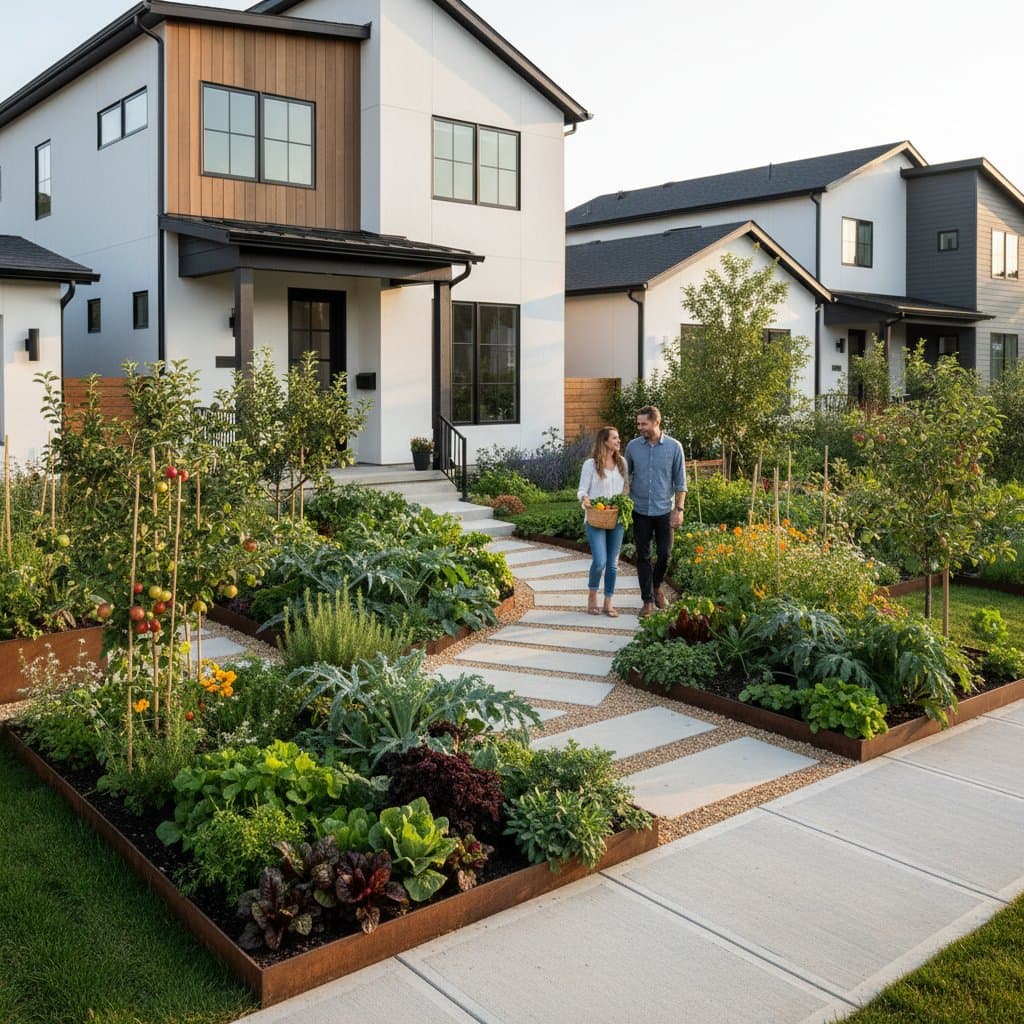Front Yard Farms Now Legal: Grow Food with Curb Appeal
For many homeowners, the front yard has served as a showcase for neatly trimmed lawns and decorative shrubs. Recent changes in local ordinances across numerous cities and counties now permit edible landscapes, transforming that space into a source of fresh produce. These developments allow residents to cultivate vegetables, herbs, and fruits directly in view of the street, reducing reliance on store-bought groceries while fostering a stronger bond with nature. Thoughtful planning ensures this productive area rivals the elegance of conventional gardens.
Planning Your Edible Landscape
Start any front yard farm with a detailed assessment of available resources. Evaluate the size of your yard, the amount of daily sunlight it receives, and the overall style of surrounding properties to maintain neighborhood harmony. In regions like California, where sunlight often exceeds six hours per day, prioritize sun-loving crops such as tomatoes and peppers. For shaded spots, select shade-tolerant options like spinach or kale, which thrive with just four hours of indirect light.
Establish a structured layout to enhance both functionality and appearance. Install raised beds measuring no wider than four feet to allow easy access from either side, minimizing soil disturbance. Incorporate pathways using permeable materials like gravel to manage water flow and prevent mud during rains. Design the beds in a geometric pattern for a modern feel or gentle curves for a more organic vibe, facilitating seasonal crop rotations that preserve soil nutrients.
Choosing Plants with Style and Substance
Select varieties that deliver visual appeal alongside nutritional value. Rainbow Swiss chard displays vibrant stems in red, yellow, and pink, adding color without sacrificing harvest yields. Purple basil offers striking foliage and aromatic leaves for culinary use, while feathery carrot tops provide texture similar to ornamental grasses.
Incorporate perennials for lasting structure. Asparagus spears emerge as elegant fronds in spring, and rhubarb leaves form broad, architectural shapes that persist through summer. For fruit options, dwarf varieties of Meyer lemons or everbearing strawberries supply year-round interest and easy picking. To achieve a formal look, group plants by uniform height, such as edging beds with knee-high marjoram. In a cottage garden style, layer tall sunflowers with trailing nasturtiums for dynamic depth and pollinator attraction.
Blending Function and Form
Integrate practical elements seamlessly to avoid a utilitarian appearance. Position a sturdy trellis along the fence line to support vining crops like cucumbers or peas, creating a living screen that softens hard edges. Place elevated planters filled with compact herbs such as parsley near the front door for quick access and a welcoming scent.
Apply mulch generously around plants to suppress weeds and retain moisture, opting for dark bark that complements green foliage. Define bed edges with bricks or recycled edging to contain soil and create crisp lines. Install a low-pressure drip system connected to a timer, delivering water precisely to roots and avoiding wet walkways. These features demonstrate intentional design, ensuring the garden enhances rather than disrupts the home's exterior.
Working Within Local Guidelines
Before breaking ground, consult your city's zoning codes and any applicable homeowners association rules. Regulations might limit plant heights to three feet in visible areas or require setbacks of two feet from property lines. Document your plans with sketches to share during permit applications if needed.
Address site-specific challenges proactively. On sloped terrain, build terraced levels using landscape timbers to capture rainwater and reduce erosion. Plant in contours following the natural grade to direct excess water away from foundations. These practices not only comply with environmental standards but also optimize water use in your edible setup.
Maintenance for Beauty and Productivity
Dedicate time each week to upkeep that preserves both aesthetics and output. Prune overgrown branches on fruit bushes to maintain shape, and harvest ripe produce daily to encourage continuous growth. Reapply a two-inch layer of organic mulch every spring to protect roots and improve soil structure over time.
Support plants with materials that align with your home's aesthetic. For contemporary residences, use sleek aluminum arches for beans; for traditional homes, opt for wooden obelisks stained to match siding. Implement a four-year crop rotation schedule, alternating families like nightshades and brassicas, to deter diseases. Combat common pests with neem oil sprays applied in the evening, followed by beneficial insect releases like ladybugs for natural balance. Consistent care results in a garden that exemplifies sustainable living.
Embracing the Rewards of Edible Front Yards
Beyond providing meals, a front yard farm cultivates community ties and personal satisfaction. Exchange surplus zucchini with passersby or host a small harvest sharing event to spark local interest in urban agriculture. Observe bees and butterflies as they visit blooming dill, enriching the sensory experience of daily life.
This approach redefines residential landscapes by merging productivity with charm. Homeowners discover that a vibrant edible garden increases property desirability, potentially raising home values through its eco-friendly appeal. Begin small with one bed, scale as confidence grows, and witness how this initiative nourishes body, mind, and surroundings alike.

